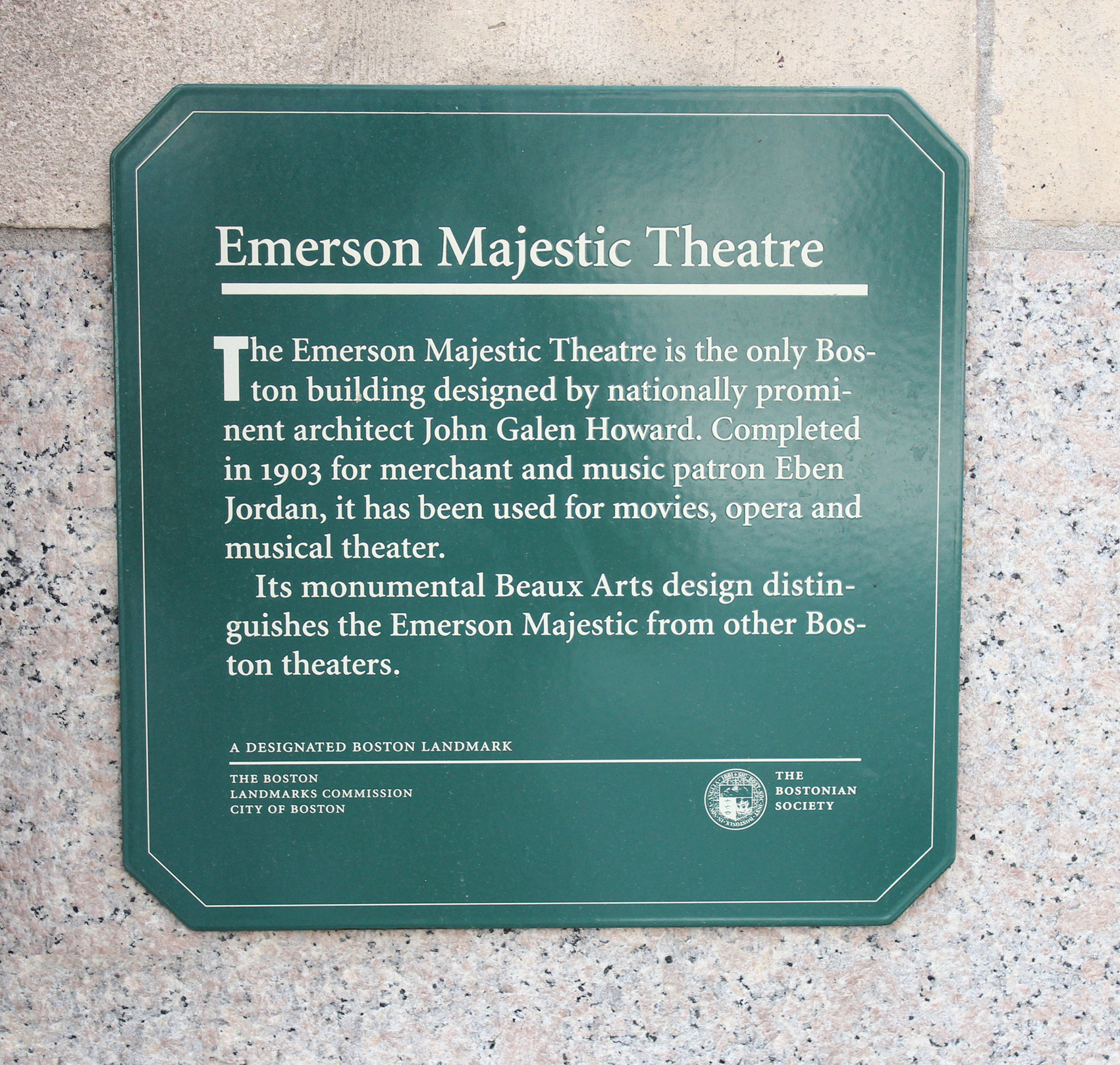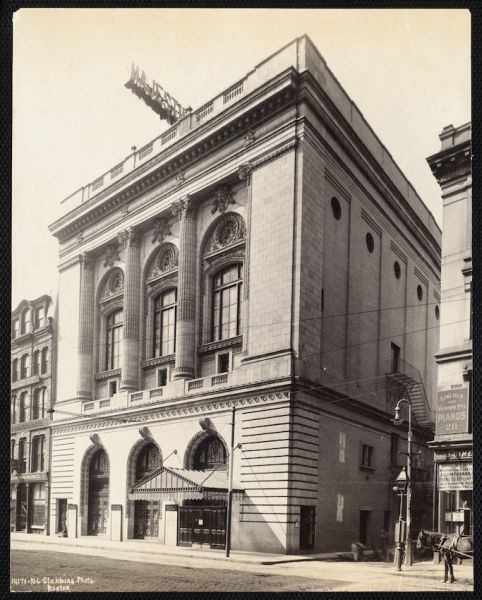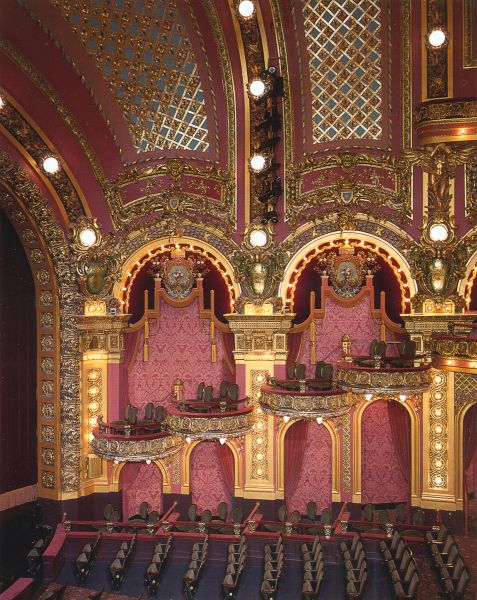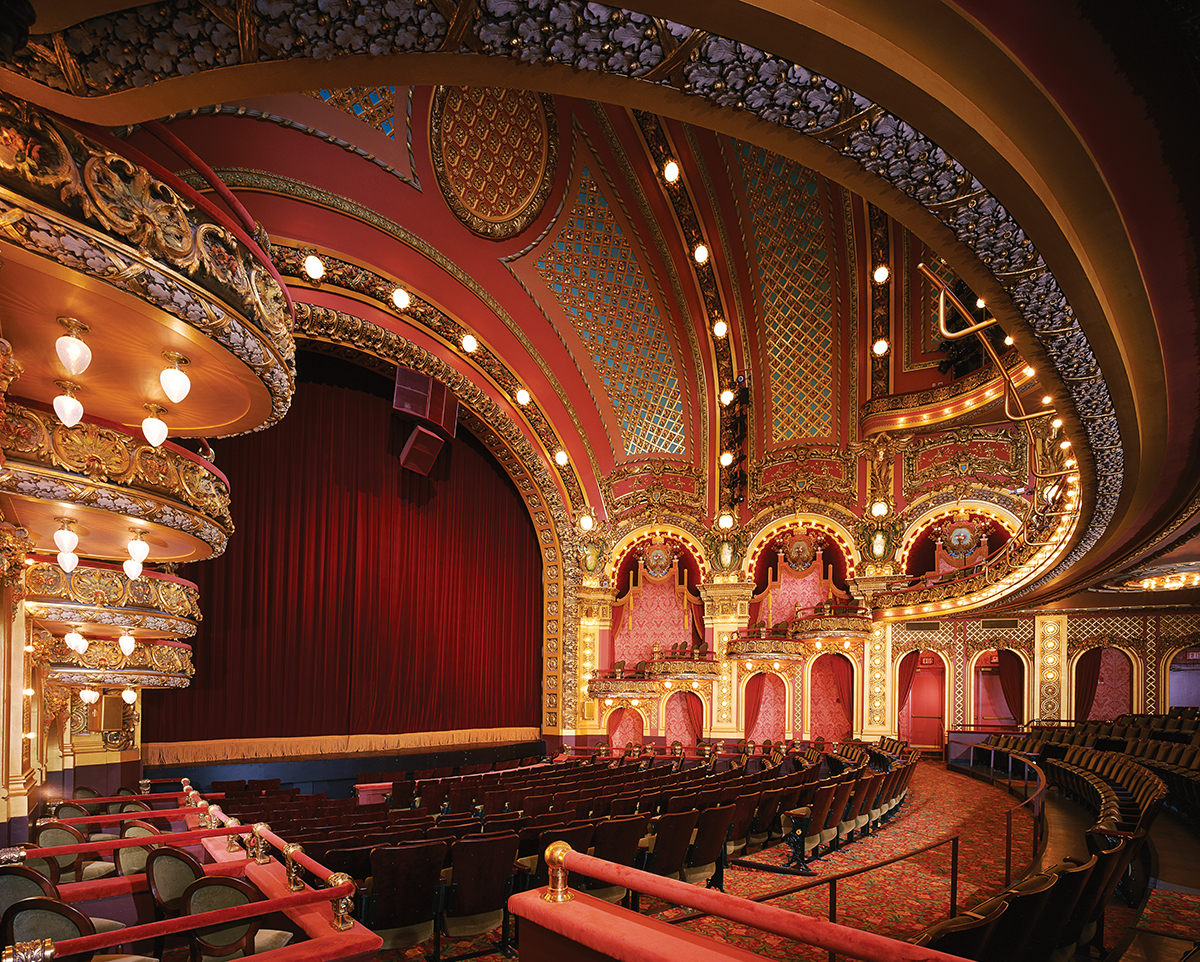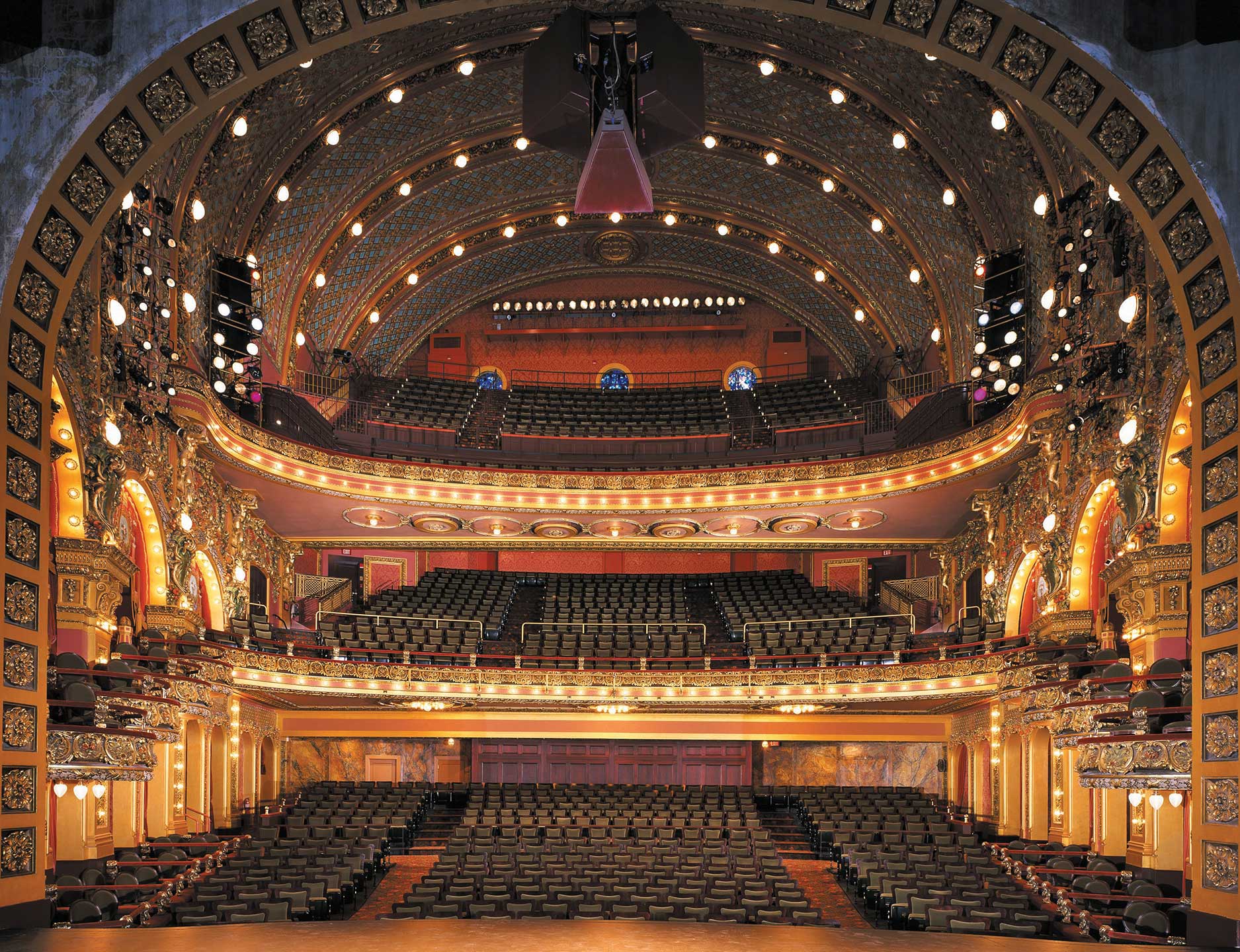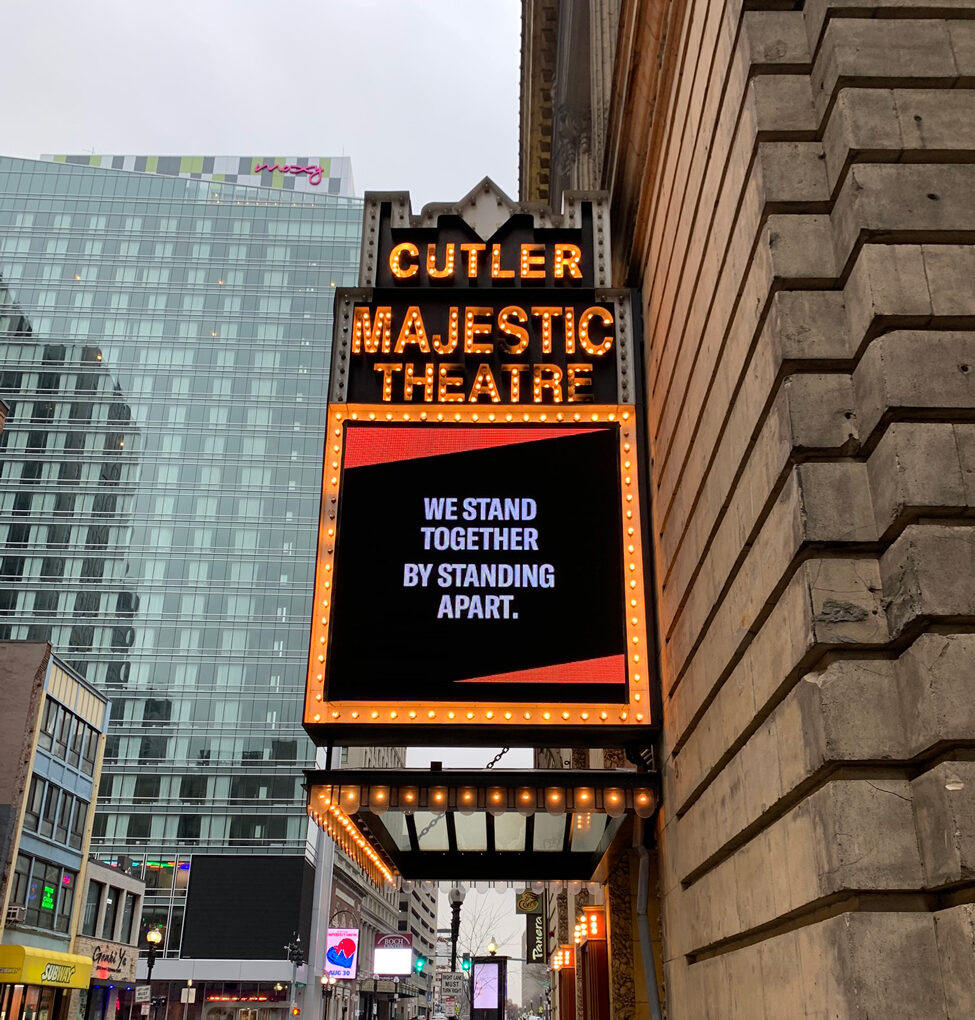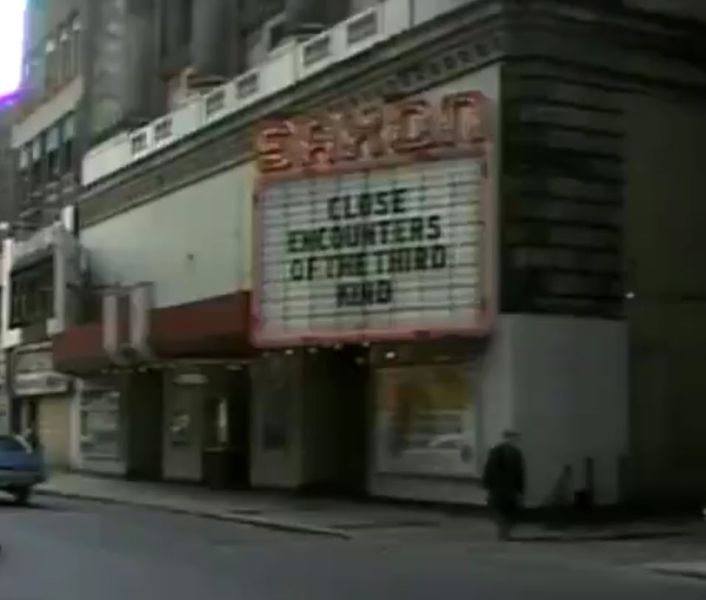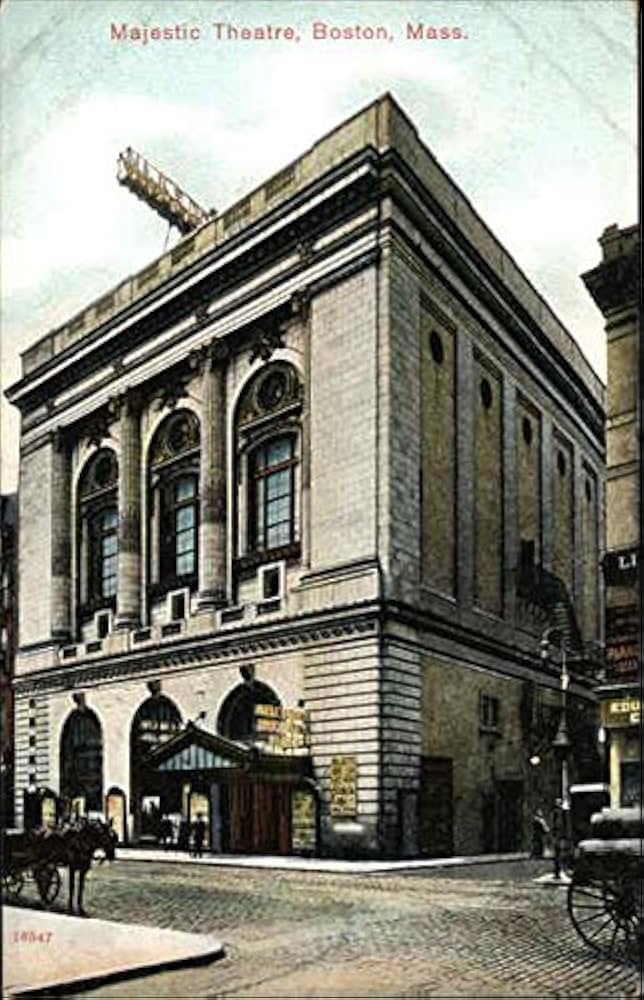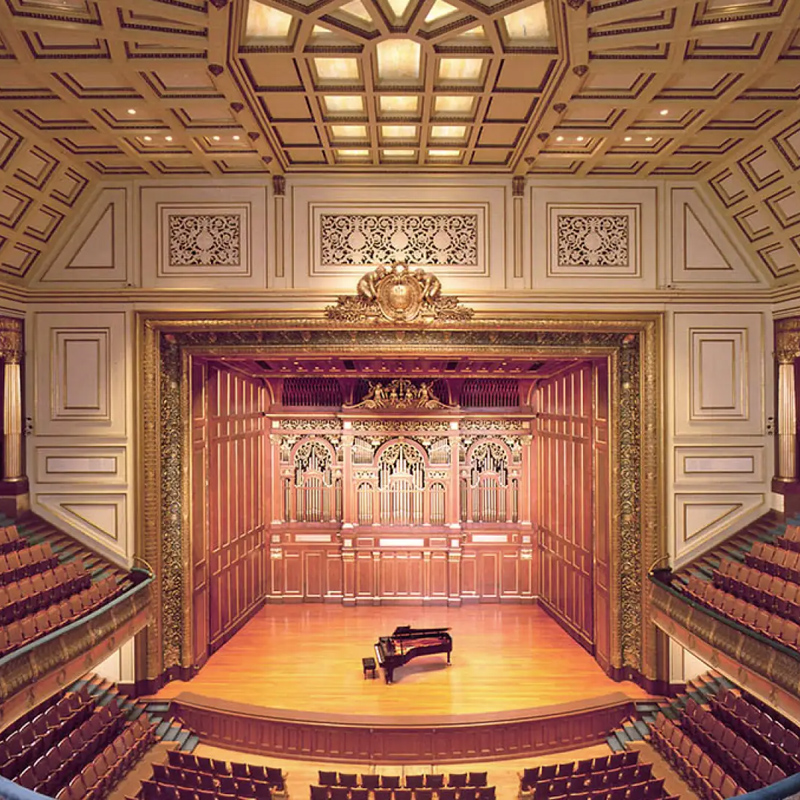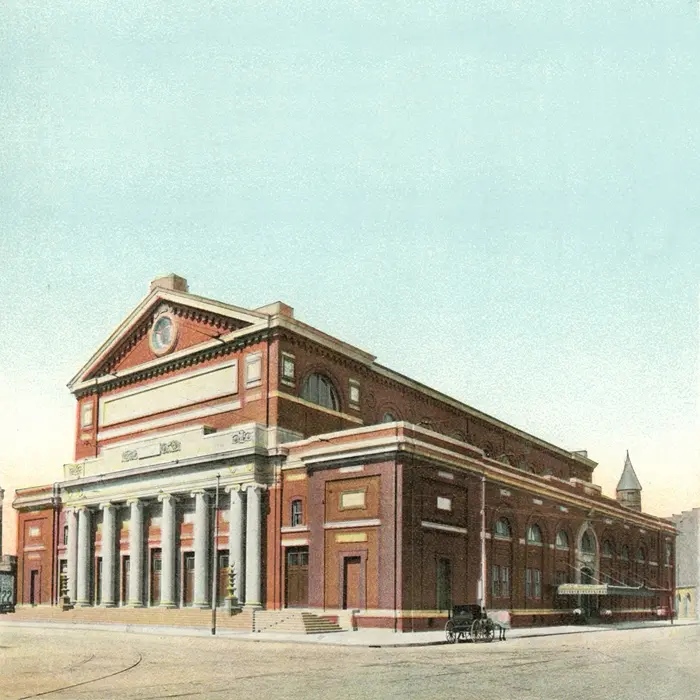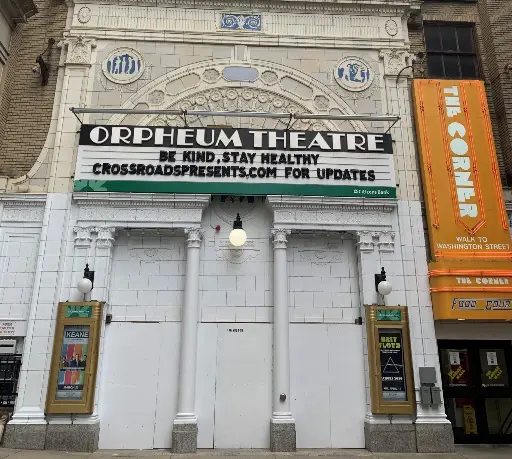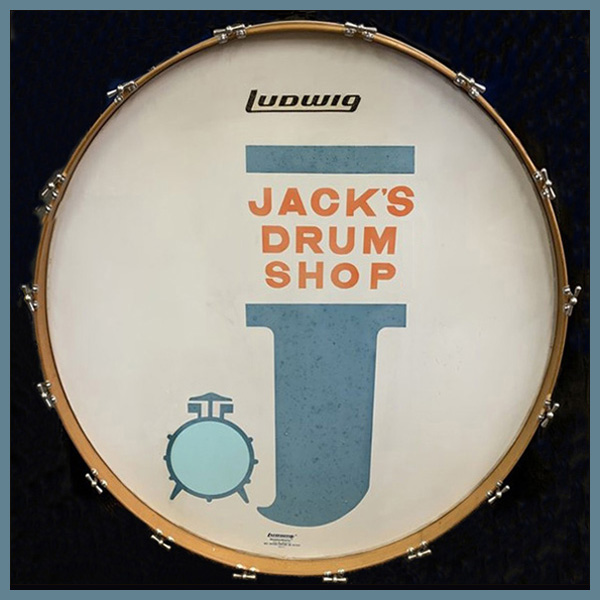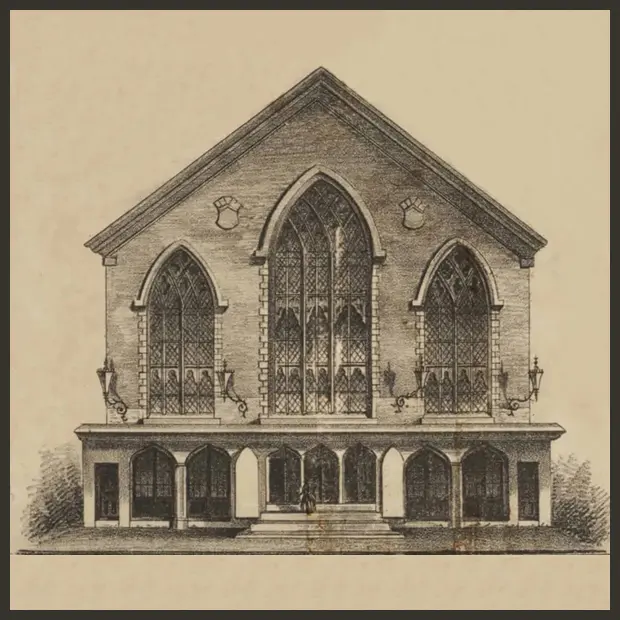Cutler Majestic Theatre
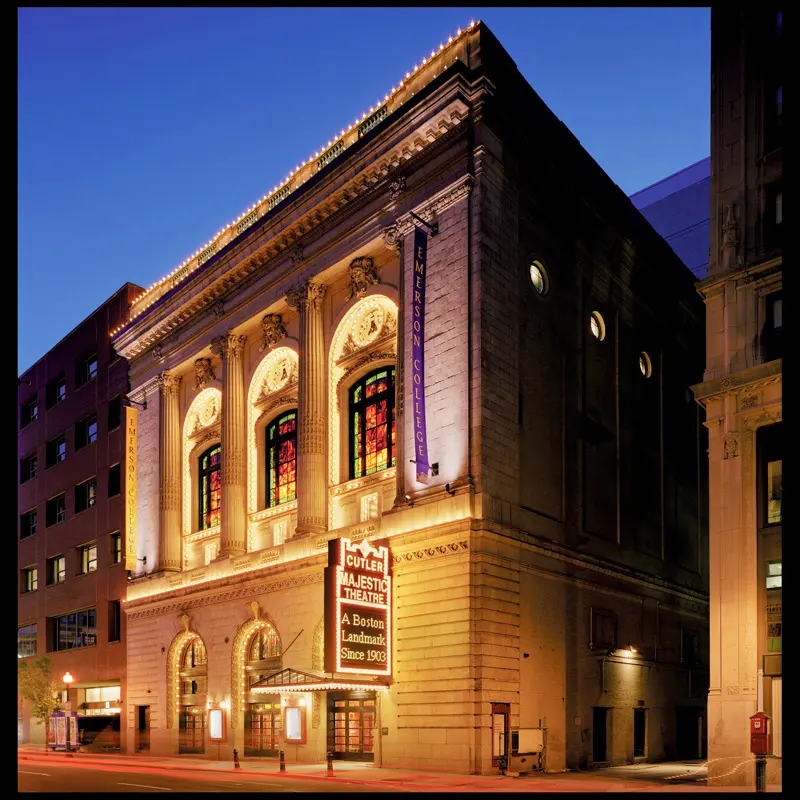
Of all the assorted adjectives that could describe Cutler Majestic Theatre, the best one is in the venue’s very name. Although its majesty and sheer splendor were squandered during its 25-odd years as a run-of-the-mill movie house, it’s stood as a cherished gem among New England’s myriad musical meccas for the bulk of its 120-year existence, a feast for the eyes and ears alike presenting a banquet of music, dance, film and theatre – just as it does today.
HISTORICAL CONTEXT, OPENING, DESIGN
For 150 years, Puritans banned all theatrical productions in the American colonies (by an act of Parliament in 1642 which was lifted in 1792 following ratification of the US Constitution). By 1900, three years before what’s now Cutler Majestic Theatre opened (as the Majestic Theatre), Boston’s Theatre District included roughly 30 minor playhouses and two major ones: Howard Athenæum (1845-1953) and the second Boston Theatre (1854-1925). Both were designed in the architectural tradition of the city’s first major theatrical venue, the Federal Street Theatre (1793-1852, also called the first Boston Theatre, designed by Charles Bullfinch, a Bostonian who also designed the US Capitol building’s rotunda and dome).
When the Majestic opened in on February 19, 1903, on the cusp of Boston becoming a major theatre hub, its practically overwhelming opulence made it “the most beautiful playhouse Boston has yet seen,” wrote The Boston Globe. Located at 219 Tremont Street – 300 feet from John Quincy Adams’ birthplace and 700 feet from Edgar Allan Poe’s – the roughly 1,200-seat venue was built to host large-scale plays, musicals and operas.
An architectural masterpiece designed in the Beaux-Arts style with an ornately decorated Rococo interior and some of the finest acoustics outside of Symphony Hall, the Cutler Majestic’s soaring stained-glass windows, six glowing archways, classic bulb-lit marquee, granite-and-terra cotta façade and fluted Ionic columns provide all the nostalgia any theatre buff could ever imagine. Its lavish interior, featuring semi-circular murals and two enormous paintings – one Grecian-themed, the other Egyptian – add an old-world sophistication that’s impossible for even the most modern-minded to resist and – to complete the time-warp vibe – in rows C and D of the central balcony are the original seats from the orchestra level, each fitted with a hook for a cane and a shelf for a top hat.
The Majestic was the first theater in Boston that included electric lights in its initial design, not gas ones, and roughly 5,000 bulbs burned on opening night – just 24 years after Thomas Edison invented the incandescent bulb. It was designed by Chelmsford, Massachusetts native John Galen Howard, who was commissioned under the patronage of Eben Jordan Dyer II (son of department store Jordan, Marsh & Company’s co-founder). Dyer also founded the Boston Opera Company and funded construction of Jordan Hall, the principal performance space of New England Conservatory. Howard graduated from MIT, trained at L’ École Nationale Supérieure Des Beaux-Arts in Paris and the Majestic is his only known Boston work, a blend of “plain old Yankee ingenuity with classical perfection,” one architectural critic wrote.
FIRST PERFORMANCE, 1920S-1950S
The first performance at the Majestic was “The Storks,” a light musical comedy, with leading American art collector and patron Isabella Stewart Gardner in the audience. The production ran for nearly five months, placing Boston’s theatre scene alongside New York’s and Chicago’s, and producers began using the Majestic as a de facto test theatre before heading to Broadway. The practice of gauging Boston audiences’ interest before deciding if New York was a viable option continues in the entertainment business to this day, though to a lesser degree.
In 1920, the New York-based Shubert Organization took control of the Majestic as part of its massive theatre acquisition effort and shifted the theatre’s focus toward the then-most lucrative option, vaudeville, putting the venue in direct competition with the nearby Orpheum Theatre. An eye-popping array of vaudeville legends appeared at the Majestic including Burns and Allen, John and Ethel Barrymore, Ruth Gordon, W.C. Fields, Al Jolson, Ruby Keeler, Ed Wynn, Ethel Merman, the Marx Brothers and master escape artist Harry Houdini.
From the mid-1930s, when the vaudeville era wilted, through the mid-1950s, when the film era blossomed, the Shuberts ran the Majestic as a “mixed-artform house” that hosted a wide-ranging assortment of entertainment including musicals, plays and second-run movies called “proven pictures.”
In 1956, entrepreneur Benjamin Sack purchased the Majestic and renamed it the Saxon Theatre, one of a chain he’d begun in 1949 and which would total eight by 1968, all in Boston except the original one in Fitchburg. Sack closed the Majestic’s balcony, repainted its lobby so it looked like an ordinary movie theater and covered its spectacular façade, thus removing all the Majestic’s majesty. The “renovated” new single-screen theatre opened with a showing of Oklahoma! and, with Sack taking full advantage of exclusivity agreements that film distributors typically offered at the time, reaped nearly unconscionable profits – until the mid-1960s.
Financial struggles, Emerson acquisition, renaming
In the mid-‘60s, as movie theatres became increasingly ubiquitous across the suburbs and film distributors nixed exclusivity agreements in response, the Saxon struggled to stay afloat. The rise of multiplexes in the 1970s sounded the death knell for Sack’s business model and by the early 1980s the theatre was in the throes of major disrepair and showing mostly X-rated movies – never first-run features.
And that’s when Emerson College stepped in, acquiring the dilapidated property in 1983 and restoring much of its original Beaux-Arts grandeur before reopening in April 1989 as Emerson Majestic Theatre. The $14.8-million restoration project (about $38 million in 2023) – which included state-of-the-art heating, air conditioning, plumbing, electrical, a new stage floor, new dressing rooms and full wheelchair accessibility – was completed in 2003, the theatre’s centennial, and the venue was renamed Cutler Majestic Theatre at Emerson College in honor of Ted and Joan Bernard-Cutler, who financed the final phases. Ted graduated from Emerson in 1951.
Post-restoration performances, concerts, Other events
Since reopening in 1989, the theater has been a performing arts center for both Emerson College and the community at large. It was the home of Opera Boston (2003-2012), has staged performances for New England Conservatory, Teatro Lirico D’Europa, the Celebrity Series of Boston and the Boston Gay Men’s Chorus and has hosted several international headliners including Harry Belafonte, Dionne Warwick and The Makem Brothers. Since 2003, the Cutler Majestic has presented the Boston Asian American Film Festival and in 2005 and 2006 it staged the Boston Comedy Festival.
As part of its mission to present “creative works that challenge and inspire and provoke,” the theatre has offered a wildly eclectic range of productions – from concerts by the Boston Lyric Opera to theater, film, dance, musicals and topical social commentary – and featured everything from the traditional to the avant-garde. In 2022, examples included Drumfolk, a percussion-based exploration of American history by dance troupe Step Afrika!; Parable of the Sower, a post-apocalyptic sci-fi rock opera based on Octavia E. Butler’s 1993 novel; and Born for This, a musical by gospel/R&B sensation BeBe Winans.
CELTIC SOJOURN SERIES, AWARDS, ACCOLADES
Since 2003, the theatre has staged what’s become a holiday-season tradition for many New Englanders: the Christmas Celtic Sojourn series, billed as “a celebration of Celtic, Pagan and Christian traditions” organized by Brian O’Donovan, host of the weekly WGBH broadcast A Celtic Sojourn in which he explores music from around the Celtic world.
The series, which has the vibe of a hootenanny, includes multi-act performances during one weekend in December and ranges from step-dancing, singing and fiddling to O’Donovan’s recitations of poems and stories. In 2016, a troupe from the award-winning Harney Academy of Irish Dance in Walpole, Massachusetts, appeared. “Playing at the Cutler Majestic Theatre is like performing inside a Fabergé egg,” O’Donovan said in 2021. “The theater is a character in the play – it has that level of importance. This old art house has seen a lot in its day, and we feel privileged and inspired to be there.”
The theatre has received an abundance of awards and accolades over the years, including an Historic Neighborhoods Foundation Award and a National Preservation Honor Award, and is listed in the National Register of Historic Places as part of Boston’s Piano Row District. In 1986, it was declared a Boston Historic Landmark and in 2003 the Boston City Council proclaimed October 30th “Ted and Joan Cutler and Cutler Majestic Theatre Day” in the city.
(by D.S. Monahan)

